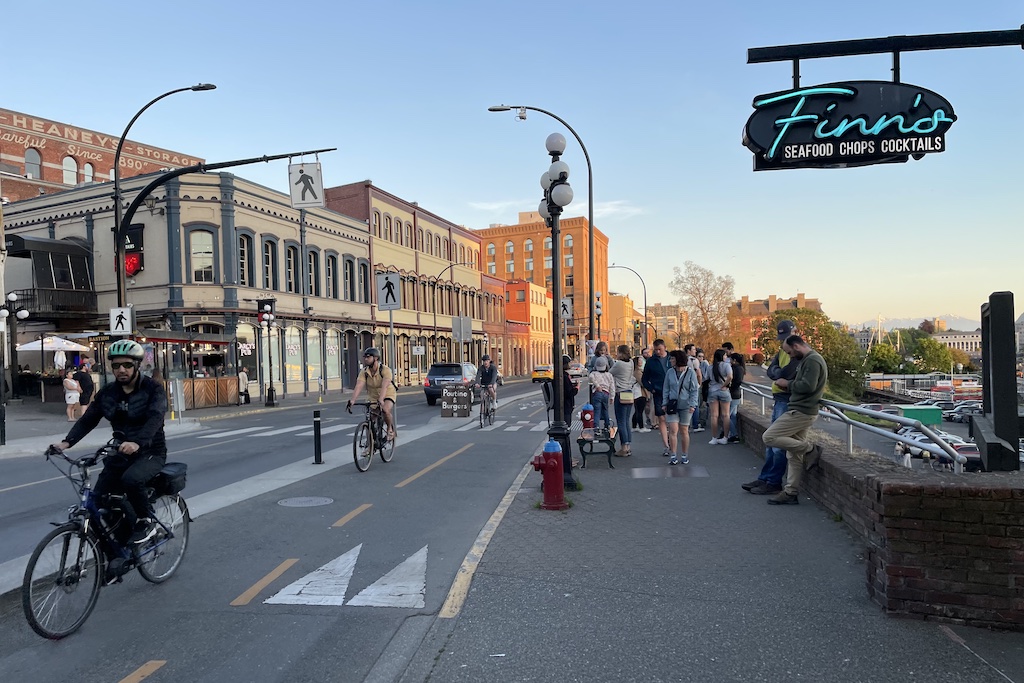Explainer: What Is a Street Weight loss plan—And Why Ought to Cities Embrace It?

In an period the place metropolis streets are anticipated to do extra than simply transfer automobiles, city planners are more and more turning to a deceptively easy idea with transformative potential: the highway weight loss plan. However regardless of a long time of success tales and a formidable physique of information supporting their advantages, the time period nonetheless raises eyebrows—and tempers—amongst skeptics apprehensive about site visitors congestion and parking.
So, what precisely is a highway weight loss plan? And why has this traffic-calming technique turn out to be such a cornerstone of contemporary city design?
What’s a Street Weight loss plan?
At its core, a highway weight loss plan is a reconfiguration of a roadway that reduces the variety of lanes devoted to automobiles. Usually, this implies reworking a four-lane highway into three lanes—two for by site visitors and one middle lane for shared left turns. The house gained from this downsizing is then repurposed for different makes use of, reminiscent of bike lanes, wider sidewalks, bus-only lanes, pedestrian islands, or inexperienced house.
The concept isn’t new. The primary highway weight loss plan in the USA was applied in 1979 in Billings, Montana. Since then, cities like Charlotte, Chicago, San Francisco, and New York have all embraced the mannequin. However it’s not only a design development—highway diets are backed by highly effective information and security outcomes.
The Toronto Area Conservation Authority says that, at its core, “a highway weight loss plan is a reconfiguration of a roadway that reduces the variety of lanes devoted to automobiles.”
Safer Streets for Everybody
One of many strongest arguments for a highway weight loss plan is security. In response to the U.S. Federal Freeway Administration (FHWA), four-lane undivided roads expertise comparatively excessive crash charges, notably as site visitors volumes improve. These crashes are sometimes the results of velocity, aggressive passing, and conflicts between turning autos and thru site visitors.
By narrowing the variety of lanes and decreasing common speeds, highway diets have been proven to chop crashes by 19 to 52 %. Slower speeds additionally imply that, when collisions do happen, they’re far much less prone to be deadly—particularly for susceptible highway customers like pedestrians and cyclists.
And when these repurposed lanes are changed into protected bike lanes or pedestrian zones? That’s when streets begin to actually embrace the “Full Streets” philosophy: making room for all customers, not simply automobiles.
Rethinking Congestion
The commonest criticism of highway diets is that they improve congestion by decreasing car capability. However the information tells a unique story.
Eradicating journey lanes can truly result in a discount in general car journeys—a phenomenon generally known as site visitors evaporation. Some drivers shift to different routes or, more and more, to different modes of transport. When bike lanes or higher sidewalks are launched, extra individuals really feel comfy biking or strolling as an alternative of driving. And when a bus-only lane is added, public transit turns into a extra viable possibility, additional decreasing the variety of automobiles on the highway.
Living proof: Ocean Park Boulevard in Santa Monica. After being reconfigured from 4 lanes to a few, with the addition of motorbike lanes, town noticed a 65% discount in crashes—and no vital improve in congestion on close by streets.

Bike lane in Victoria, BC
Street Weight loss plan Cuts Carbon, Too
There’s one other bonus to all this: decrease emissions. By shrinking highway house for automobiles and inspiring strolling, biking, and transit, highway diets cut back general Car Miles Traveled (VMT). That interprets into fewer greenhouse fuel emissions—a win for cities seeking to meet their local weather targets.
Calmer site visitors additionally means extra environment friendly driving. Vehicles burn extra gas and produce extra emissions at increased speeds and through stop-and-go circumstances. Street diets assist easy the stream and mood velocity, making streets not solely safer however greener.
Information-Pushed Street Weight loss plan Planning
Not each highway is a candidate for a weight loss plan, which is why planners depend on a set of metrics—like Annual Common Each day Visitors (AADT), Car Miles Traveled (VMT), and Turning Motion Counts (TMC)—to evaluate viability.
Fashionable site visitors analytics, together with GPS-based Origin-Vacation spot monitoring and real-time velocity information, can pinpoint high-risk corridors the place highway diets may very well be best. These instruments additionally permit planners to run before-and-after research to indicate real-world outcomes and tackle group considerations with laborious information.
Take Armour Street in North Kansas Metropolis. After a highway weight loss plan was applied, together with protected bike lanes and pedestrian islands, a examine confirmed car speeds dropped considerably, biking exercise doubled, and common journey occasions rose by solely 5 seconds. That sort of end result speaks volumes.
Why the Resistance?
Regardless of the successes, highway diets typically face pushback. Residents fear about elevated journey occasions, emergency car delays, or diminished entry to native companies. However with data-driven planning and group engagement, many of those considerations may be addressed—and even reversed.
In truth, safer streets typically increase native companies by attracting extra foot site visitors and cyclists. And emergency response occasions can stay unchanged if planners work with native providers to make sure satisfactory alternate routing.
Street Diets as a Instrument for Biking Advocacy
For biking advocates, highway diets supply a robust, data-driven framework to assist reallocating house from automobiles to bikes. As an alternative of framing bike lane installations as taking one thing away from drivers, highway diets current them as security upgrades that profit all highway customers.
By changing extra journey lanes into protected bike lanes, wider sidewalks, or middle turning lanes, highway diets cut back rushing and collisions—typically by as much as 52%, in accordance with the Federal Freeway Administration—whereas sustaining cheap journey occasions. In response to Streetlight Date, in North Kansas Metropolis, for instance, a highway weight loss plan on Armour Street added bike lanes and diminished rushing, with journey occasions rising by simply 5 seconds.
Information is vital. Metrics like AADT (Annual Common Each day Visitors), crash historical past, and car speeds assist establish streets the place highway diets will probably be best, and provides advocates instruments to reply to considerations about congestion or misplaced parking. These modifications additionally assist broader metropolis objectives round local weather, public well being, and security.
As cities purpose to scale back automotive dependency and create safer, extra livable streets, highway diets present a strategic language and proof base advocates can use to push for everlasting biking infrastructure.
Remaining Ideas
The highway weight loss plan isn’t about punishing drivers. It’s about creating streets that work higher for everybody—from the dad or mum pushing a stroller to {the teenager} biking to highschool, the supply driver navigating a decent city hall, or the senior strolling to the shop.
As our cities proceed to evolve, highway diets supply a cheap, data-backed, and scalable method to make them safer, cleaner, and extra livable. It’s not nearly dropping a lane—it’s about gaining a greater future for city mobility.





